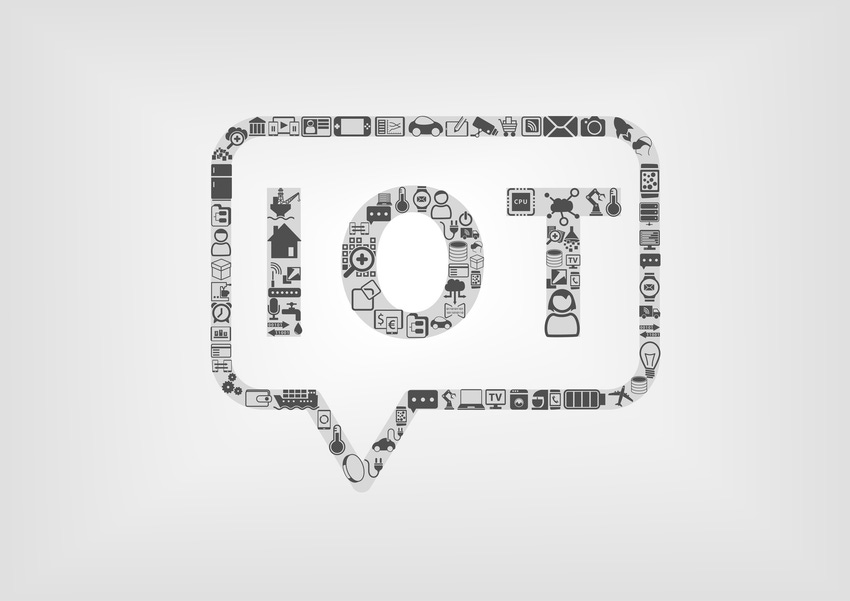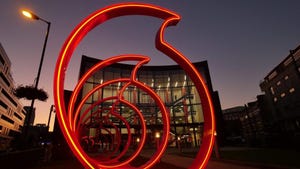In 2016, the number of IoT devices (including connected cars) being added to networks exceeded the number of phones and tablets combined.
August 31, 2016

Periodically, Telecoms.com invites third parties from the industry to address some of the biggest challenges in the market today. In this post, Karen Wheeler, General Manager of Affinion UK, shares her opinion on the potentially transformative effects the IoT can have on customer engagement.
The Internet of Things has seen a meteoric rise in recent years and we’ve now reached a remarkable milestone. A brand new report by Chetan Sharma Consulting reveals, for the first time, that U.S. mobile operators are adding IoT connections to their networks faster than they’re adding phones. In 2016, the number of IoT devices (including connected cars) being added to networks exceeded the number of phones and tablets combined.
It’s a trend that we’re seeing the world over, including here in the UK. A good example is British Gas, which recently pledged to offer free electricity at weekends to its two million customers with smart meters. At the 2016 Mobile World Congress in Barcelona, it was the dominant theme, with almost every stall and every conference session featuring IoT in some way. With this momentous increase in global connectivity now in our midst, the telco industry is becoming the epicentre of the technological future. The next step is ensuring the technology actually makes a difference to people’s lives and businesses’ bottom line, and it not just dismissed as a fad.
International research firm IDC has predicted that by 2018, there will be 200,000 new IoT applications and spending will be one and a half times current levels. Clearly, consumers are beginning to embrace these innovations and even demanding them. Recent research, conducted by TNS on behalf of GMC software, a global leader in the Customer Communication Management, found that 19 per cent of consumers say insurers should use mobile apps to communicate with them, while only 5 per cent of consumers’ insurers currently provide such a service. This is a huge gap between consumer expectations and the reality of what’s available.
In addition, the survey showed that 56 per cent of current insurance customers would like their insurer to use technology, such as health monitors or connected cars, to provide a more accurate premium – even if this resulted in them paying a little more initially in order to lower premiums over time.
Despite current spend, only seven per cent of companies have developed a comprehensive strategy for the IoT and committed investments accordingly. This lack of vision is frustrating as, while in general chief executives recognise the potential of the IoT to deliver long term job and revenue growth, they are still reticent. The disconnect between sentiment towards and actual investment in IoT might be due, in some part, to a lack of understanding among senior leaders. Only 38 per cent say they “fully” understand the IoT, while a majority (57 per cent) say it is “somewhat” understood.
Vodafone recently it announced its smart summer concept range; swim shorts and bikinis which use UV sensors to monitor sun exposure, alerting the user with a smartphone notification when they’ve been exposed to too much UV light. Connected clothing may sound like just a gimmick, but this level of connectivity is something brands can harness in order to communicate with their customers on an individual basis, strengthening customer engagement and brand loyalty.
At Affinion, we’re continually asking ourselves – how can IoT be used in new ways to improve the relationships companies have with their customers? Home insurance is a great example because it is an industry in which providers have historically struggled to build affinity with their customers. They only really interact with one another at policy renewal time, or when a claim is made. Responding to consumers’ desire for mobile apps is a first step, but could insurance brands develop deeper customer relationships by integrating and partnering with technology providers that provide smart metering? Or provide an automatic service to send a heating engineer if customers’ homes encounter a problem while they’re on holiday?
It’s definitely not far off and in broad terms, home owners that use smart metering are ‘switched on’ and proactive in the management of their property, so they might equally be welcoming of a closer relationship with an insurance provider. It’s about harnessing the technology to build a ‘stickier’ relationship, and giving the provider another touchpoint at which to engage with the customer.
As the Chetan Sharma report highlights, connected cars are an area that has moved on apace over 2015 and 2016. In November 2013, Affinion was part of the start-up team when Verizon looked to add a telematics service to its IoT range – a smart, connected driving experience with a potential US market of 150 million drivers.
Launched in the US in August 2015, the hum by Verizon product covers mechanical and safety assurance features – diagnostics, location, emergency SOS, arranging a tow vehicle – as well as commercial add-ons such as discounts on tyres, and consumer elements such as management of the car’s communications devices.
This product is specific to the automotive market, but the lessons learned can be extrapolated to any sector where you can aggregate services that are going to be useful to the consumer.
More so than other sectors, retailers are increasingly using IoT technology to engage with consumers directly and there are even more opportunities afoot. IDC predicts digital signage use in retail outlets will grow from $6 billion in 2013 to $27.5 billion in 2018, as retailers continue to digitise the consumer experience. Further innovations in the use of cognitive computing will enable retailers to enhance the customer experience by personalising their service based on previous shopping histories, web activity, loyalty programme patterns, a customer’s general interests and lifestyle. They will be able to shape the retail experience for each individual customer, using a shopper’s in-store location to deliver timely and relevant offers, such as digital coupons or loyalty rewards, straight to them.
Where else could IoT be adopted quickly? Vodafone has also experimented with putting IoT into pets’ collars and kid’s shoes, and there are obvious benefits in being able to track children and, at the other end of the scale, elderly people.
Those brands that successfully develop mass market IoT products will be the ones that zero in on what is relevant and desirable to people. There are, potentially, a lot of synergies here for telcos and technology providers to work with brands in building customer relationships. Each sector can bring their real world skillsets to bear for mutual benefit.
There are, naturally, security concerns around IoT – by opening up their homes and lives to yet more connected devices, it’s not unreasonable for people to be concerned that they are increasing their risk of a security breach. But there are no ‘new’ threats here – experienced providers of customer engagement products are fully in tune with what the threats are, and how to combat them.
These are early days, but it’s our belief is that the IoT presents a wealth of opportunity for any business looking to build customer engagement and it’s a journey that we’re excited to be taking them on. As the world of IoT draws closer, it will be the responsibility of the telecoms industry to provide the technology to facilitate this new age of interconnectivity, and the companies that have taken their own innovative strides are poised to capitalise.
Read more about:
DiscussionAbout the Author(s)
You May Also Like








.png?width=300&auto=webp&quality=80&disable=upscale)


_1.jpg?width=300&auto=webp&quality=80&disable=upscale)


.png?width=800&auto=webp&quality=80&disable=upscale)